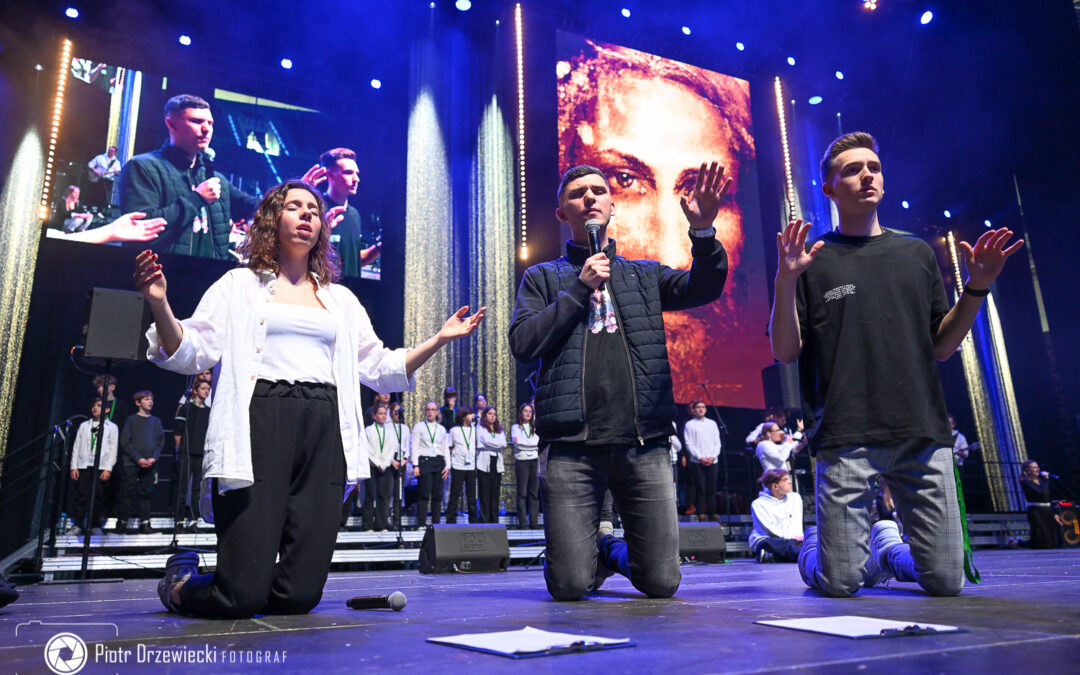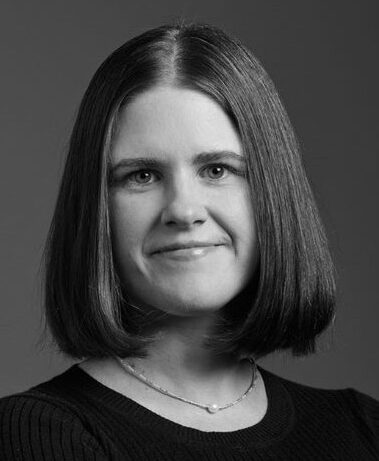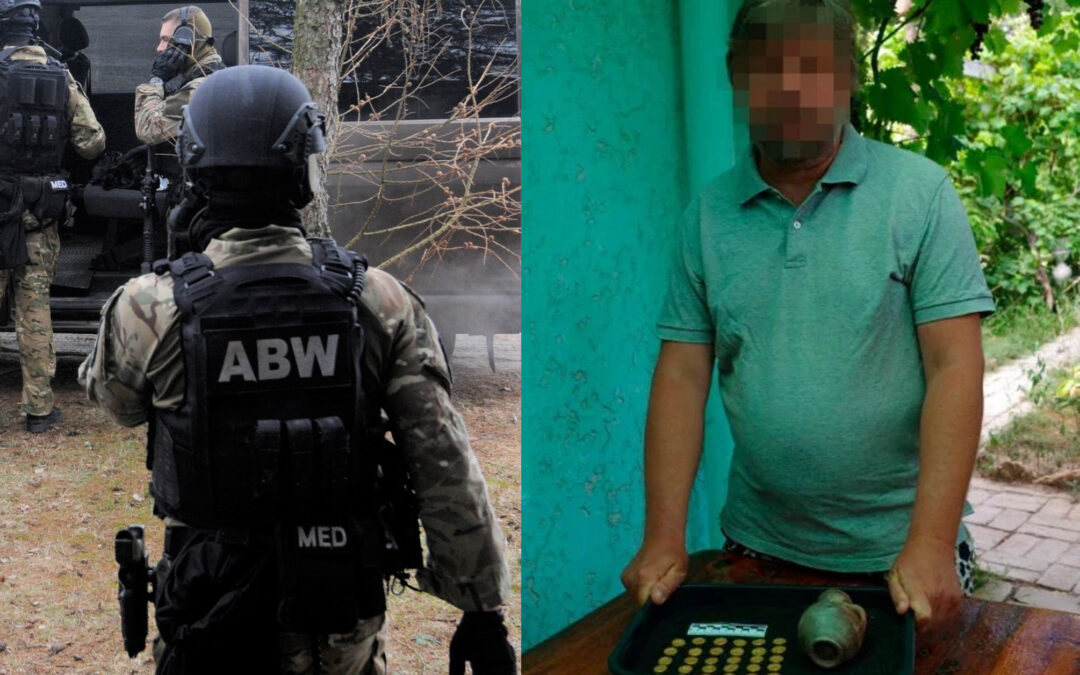By Caroline Zielinski
A retired footballer who sells out stadiums with his speeches about God. A 25-year-old woman with a sweet voice and a sharp tongue, whose advice to women on TikTok is to keep your legs closed until marriage. A priest who discusses the Bible over breakfast on YouTube.
These are some of the voices of modern-day Catholicism in Poland, using social media to spread God’s message.
The monk next door
Adam Szustak, a Dominican monk and priest, has been active on the internet under the name “Langusta na palmie” (Lobster on a palm) since 2014.
His YouTube channel, which boasts more than 900,000 subscribers, has become one of the most popular in the Polish language, and by far the most popular channel run by a member of the clergy in Poland.
Owing to his social media reach, he is arguably the most popular priest in Poland, and has successfully navigated the tech world to launch a religious influencer profile – part traditional Catholic priest, part YouTube star and part evangelical preacher.
In his videos, Szustak speaks colloquially and relates bible stories and scripture to real-life scenarios in a bid to connect theology with everyday life. While he does perform traditional sermons, he is seen by many as a more relaxed and modern priest within the Catholic order.
In one YouTube video, Szustak references Taylor Swift and her Eras Tour, and admits to tearing up at the moment in the pop star’s concerts when she gives her hat to a young boy or girl in the audience.
“Some of you may think, what is he going on about, talking about Taylor Swift, but I think when she chooses that one person from a stadium of 96,000…it’s the most beautiful Jesus scene ever,” he says in the video.
“It shows how Jesus can pick you out…and shine his light upon you.”
The Catholic church in Poland is suffering from a deep and growing divide between the clergy and the faithful, according to a report by the Polish episcopate summarising the results of consultations with around 100,000 parishioners across the country https://t.co/i2Jn9SndbZ
— Notes from Poland 🇵🇱 (@notesfrompoland) August 31, 2022
In their analysis of Szustak and his principle of practical theology, sociologists Barbara Thériault and Konrad Pędziwiatr point out that his appeal lies in his ability to blur the lines between being a clergyman and a regular guy.
“Wearing T-shirts, sneakers, and hoodies, Szustak looks like ‘the guy next door’ (he has a beard, shaves his head, and looks like many men in Poland), something he stresses himself – ‘I’m just an average guy producing films on YouTube’ – before using his authority as a monk,” they write.
Telling it like it is
Natalia Ruś, who goes by the name “Najjjka” on her TikTok, YouTube and Instagram channels, is one of the more controversial Catholic influencers. She markets herself as someone who tells it like it is, even if the truth is uncomfortable.
“My first video was about premarital chastity back in 2020, and people insulted and ridiculed me a lot for this,” she says. “I’ve noticed a difference when other people talk about God – they don’t cover such heavy topics as I do. I’m people’s guilty conscience, which is why I get so much hate.”
@najjjka2 Mam 25 i czekam z tym do ślubu ❤️ #najka #dc ♬ dźwięk oryginalny – Najka
Some of her more controversial comments include calling children born to unmarried parents unchaste, as well as supporting far-right Polish MP Grzegorz Braun after he sparked outrage in December 2023 by using a fire extinguisher to put out candles lit in celebration of Hannukah.
When asked about her support for Braun, she told Notes From Poland that “I don’t think anything about Grzegorz Braun. I just listen to him and I can see that he is not afraid to say what he really thinks”.
Ruś has also faced legal action over remarks she made about Ukrainian refugees, receiving an initial conviction under Poland’s hate crime laws in 2023 but then later seeing the case against her withdrawn after she had appealed.
Sorry to interrupt your reading. The article continues below.

Notes from Poland is run by a small editorial team and published by an independent, non-profit foundation that is funded through donations from our readers. We cannot do what we do without your support.
Ruś often draws inspiration for content from her own life. Her videos are an intriguing mix of personal stories – she regularly shares anecdotes of men not respecting her boundaries (e.g. her no-sex-before marriage rule) – book recommendations, popular internet memes and religious lectures about the seven sins.
She also creates fashion videos, where she styles herself in outfits she claims are appropriate for a devout Catholic girl, accompanied by the soundtrack of the popular television series Bridgerton.
Despite the controversy, Ruś – who does not receive funding from sponsors or public support from the church – has clearly found a gap. With a combined social media following of more than 600,000, including over half a million people on TikTok, her popularity is too significant to ignore.
The footballer turned miracle-worker
Ruś and Szusztak are not the only religious influencers with large followings: 32-year-old former football player Marcin Zieliński (no relation to the author) is selling out stadiums across the world with his evangelical sermons, and garnering more than 300,000 followers across Facebook, Instagram and YouTube.
Zieliński says that, like most Polish children, he grew up attending mass, but mainly out of obligation. This changed at the age of 15, when he says he “met Jesus for myself” for the first time. Over the years, his faith strengthened and evolved into a calling.
“It all started from Facebook,” Zieliński recalls. “After posting my sermons online, a lot of people started to ask when they could meet and pray together. They hear Jesus healed people at our meetings, that their lives were changed.”
From this his fame grew, spreading to YouTube (where Zieliński posts his live sermons as well as exclusive online-only religious content) and Instagram.
Described as an evangelist and charismatic, Zieliński’s social media profiles are filled with testimonies from people claiming he healed them spiritually and physically.
Today, he is the author of books on Christianity, and speaks at forums, conferences, retreats and prayer sessions in both Europe and the United States.
For Zieliński, technology is just another vessel to spread the word of God. “For each age there exist different methods for God to reach people,” Zieliński says. “Jesus managed to get [his message] all over the world without the internet, but the world is different today.”
The proportion of Catholics in Poland who attended Sunday mass stood at 29.5% in 2022, new church figures show.
That was up from 28.3% amid the pandemic in 2021 but well below the pre-Covid figure of 36.9% in 2019 and continues a long-term decline https://t.co/FQfGGMi1Tf
— Notes from Poland 🇵🇱 (@notesfrompoland) December 19, 2023
However, he faces criticism from both inside and outside the church. His critics claim that Zieliński’s methods and teachings deviate from Catholicism, drawing instead from the Toronto Blessing, an Evangelical Protestant church.
Moreover, in 2018 a film was made questioning the truth of the “miracles” that often happen on his watch, as well as his devotion to the Catholic faith. Zieliński denies these claims and says he has the support of the Catholic church.
“I get a lot of a hate, which was amplified after the movie, which was very average but nonetheless caused a lot of chaos,” he says.
While he considers the issue resolved, claims that Zieliński is in bed with the Protestants continue to linger, although support from Catholic bishops and priests – including Szustak – has helped legitimise his position in the faith.
Stemming the flow away from the church
Although Poland remains a religious country, with 71% of citizens declaring in the last census that they belong to the Catholic church, that figure is down from 88% just a decade earlier. Across the same period, the number of those who say they do not belong to any faith has risen from 2.4% to 6.9%.
Young Poles have seen the starkest decline in practising Catholicism – the figure has fallen from 69% in 1992 to 23% in 2021. In 2022, the Catholic Primate of Poland, Archbishop Wojciech Polak, admitted that the decline in religious practice among young Poles was “devastating”.
The proportion of people in Poland identifying as Roman Catholics has fallen to 71% in the latest national census, down from 88% a decade earlier https://t.co/Li5vSX5IIO
— Notes from Poland 🇵🇱 (@notesfrompoland) September 29, 2023
Andrzej Kielan, who studies the role of technology in theology at the Pontifical University of John Paul II in Kraków, thinks this is partly due to the Catholic church’s tendency to still largely reflect older religious traditions “centred around Christmas, Easter, baptisms and weddings”.
Its support of conservative policies brought in under the former Law and Justice (PiS) government, such as the suspension of in vitro fertilisation programmes, limiting access to emergency contraception, and a near-total abortion ban, is also contentious.
While Kielan believes that trends show a decline across religious traditions in many Western countries, he points to restricting access to abortion – and the church’s support of the changes – as one of the key drivers of disquiet among Polish youth.
“When you introduce something like this, you have to convince people first that it is a good decision and not force them to do it, otherwise you face a big problem,” he adds.
A growing number of Poles are turning away from the Catholic church, but not from religious belief itself.
This creates challenges for the church, but also for Polish identity, which has historically been linked to Catholicism, writes Katarzyna Skiba https://t.co/udWGzd0X7F
— Notes from Poland 🇵🇱 (@notesfrompoland) April 18, 2023
Meanwhile, Zieliński, Ruś and Szustak are connecting to younger followers through the platforms they use, and they are all successfully blending the modern art of technology with ancient scripture.
While Catholic influencers may not succeed in bringing everyone back to the religion, Kielan believes they can at least stem the flow of leavers.
“The way influencers spread religious texts is not as official as the church,” he explains. “They do it via platforms that young people tend to find themselves using, and their different style of communicating religious issues, such as through sharing personal experiences, is appealing to a younger audience.”
In a 2019 paper, Kielan and his co-authors argue that making use of young people’s interest in art, music, literature, pop culture and information technologies is essential for the church, even if “they are of little interest to teachers of religion, tutors and priests”.
This approach is particularly evident in Szustak and Ruś’s content, which incorporates cultural trends such as pop stars and Netflix shows.
A priest has racked up millions of views on TikTok after posting videos dancing with his Catholic catechism students at a high school in Poland.
"I want to show that the church is not so rigid, that it radiates positive energy and is attractive" https://t.co/lM3MzmOiHZ
— Notes from Poland 🇵🇱 (@notesfrompoland) December 13, 2022
“Religiousness is becoming more of a social phenomenon than a strictly spiritual one for many young people,” the researchers conclude.
The internet’s perceived flat structure is also a drawcard. “Here, no one can compel anyone to do anything, unlike being part of the official religious community,” Kielan says. And it seems some senior Catholics – including Pope Francis – are not as averse to social media as those from Poland.
“Pope Francis is in many ways the opposite of [Polish pope] John Paul II, who was more concerned with the traditional version of Catholicism,” Kielan says. “You can see that in Pope Francis’s Twitter profile – in some ways, you can even say he is the original Catholic influencer.”
Main image credit: Piotr Drzewiecki Fotograf




















